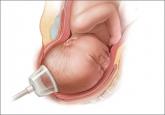News for Your Practice
States with higher malpractice rates have more cesarean deliveries and fewer vaginal deliveries
Researchers also ask, “Can a state birth injury fund reduce malpractice rates?”
expert commentary
William H. Barth Jr, MD
Chief, Division of Maternal-Fetal Medicine, Massachusetts General Hospital, and Associate Professor of Obstetrics, Gynecology, and Reproductive Biology, Harvard Medical School, Boston, Massachusetts.
The author reports no financial relationships relevant to this article.

Contemporary data suggest that it is. When rotational instrumental delivery was compared with cesarean delivery in this 5-year retrospective cohort study, there was no difference by delivery method in the rates of delayed neonatal respiration, reported critical incidents, or fetal arterial umbilical pH of less than 7.1. The only differences were less blood loss and a lower risk of significant hemorrhage (>1.5 L) in the rotation group (odds ratio, 0.24; 95% confidence interval, 0.13–0.64).
Aiken AR, Aiken CE, Alberry MS, Brockelsby JC, Scott JG. Management of fetal malposition in the second stage of labor: a propensity score analysis. Am J Obstet Gynecol. 2015;212(3):355.e1–e7.
The relative safety of instrumental rotations in the second stage of labor remains controversial. Older reports suggest an unacceptable risk of fetal injury, while recent studies demonstrate more favorable outcomes without significant fetal or maternal morbidity. This study by Aiken and colleagues goes one step further by using propensity analysis to adjust for the likelihood of receiving an attempted instrumental rotation.
Details of the study
With a cohort of 833 women with second-stage positional abnormalities, Aiken and colleagues compared maternal and newborn outcomes associated with cesarean delivery (n = 534) with those of an attempted rotational procedure (n = 334). Among the attempted instrumental rotations, 299 (90%) were successful. By intention to treat, failed attempts at rotation and vaginal delivery were included in the instrumental rotation group. The authors relied on propensity analysis to adjust for selection bias.
Strengths and weaknesses
The main strengths of this study are the relatively large sample size, the inclusion of failed procedures in the forceps group based on intention to treat, the robust approach to adjusting for the likelihood of undergoing an attempted rotation, and the contemporary nature of the cohort.
However, the study has 4 important limitations:
What this evidence means for practice
Although this study does have limitations, it adds to the increasing number of contemporary reports suggesting that instrumental rotational procedures are safe. Though it is not without challenges, training in rotational forceps should continue.
— William H. Barth Jr, MD
Share your thoughts! Send your Letter to the Editor to rbarbieri@frontlinemedcom.com. Please include your name and the city and state in which you practice.
Researchers also ask, “Can a state birth injury fund reduce malpractice rates?”

New data confirm that the combination of forceps and vacuum extraction should be avoided and demonstrate that use of midcavity rotational forceps...

Building a comprehensive obstetric patient safety program for your unit

A peer-to-peer audiocast with John T. Repke, MD, and Errol R. Norwitz, MD, PhD
